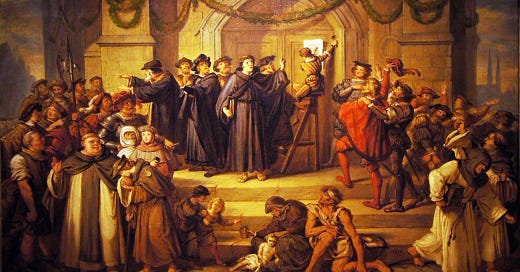The Counter-Reformation: Force and Persuasion
The Counter-Reformation was an effort by the Catholic Church to counteract its losses to Protestantism.
When Martin Luther wrote and supposedly nailed his 95 Theses to the door of a church in Wittenberg in 1517, he did not realize what he started. But only five years later, he was there to finish it. The German Reformation and, later on, the French Reformation split Christendom in two and later in three. Religious wars followed. They were partly about faith and dogma. However, politics, money, and lands were at stake.
In 1517, the Catholic church considered Luther and his followers, heretics. And planned to deal with them the same way it managed to deal with all the heresies throughout its 1,500 years of history. Yet, times had changed, people were different, and both the Pope and Catholic institutions were late to recognize that. They ignored the need of people in the 16th century to participate in religious matters, the desire of the now more often literate people to experience their faith more fully. They failed to see the changed political and economic situation, which asked for a different relationship between the state and the church.
The whole article can be found on the Culture Frontier as it was originally published here:



